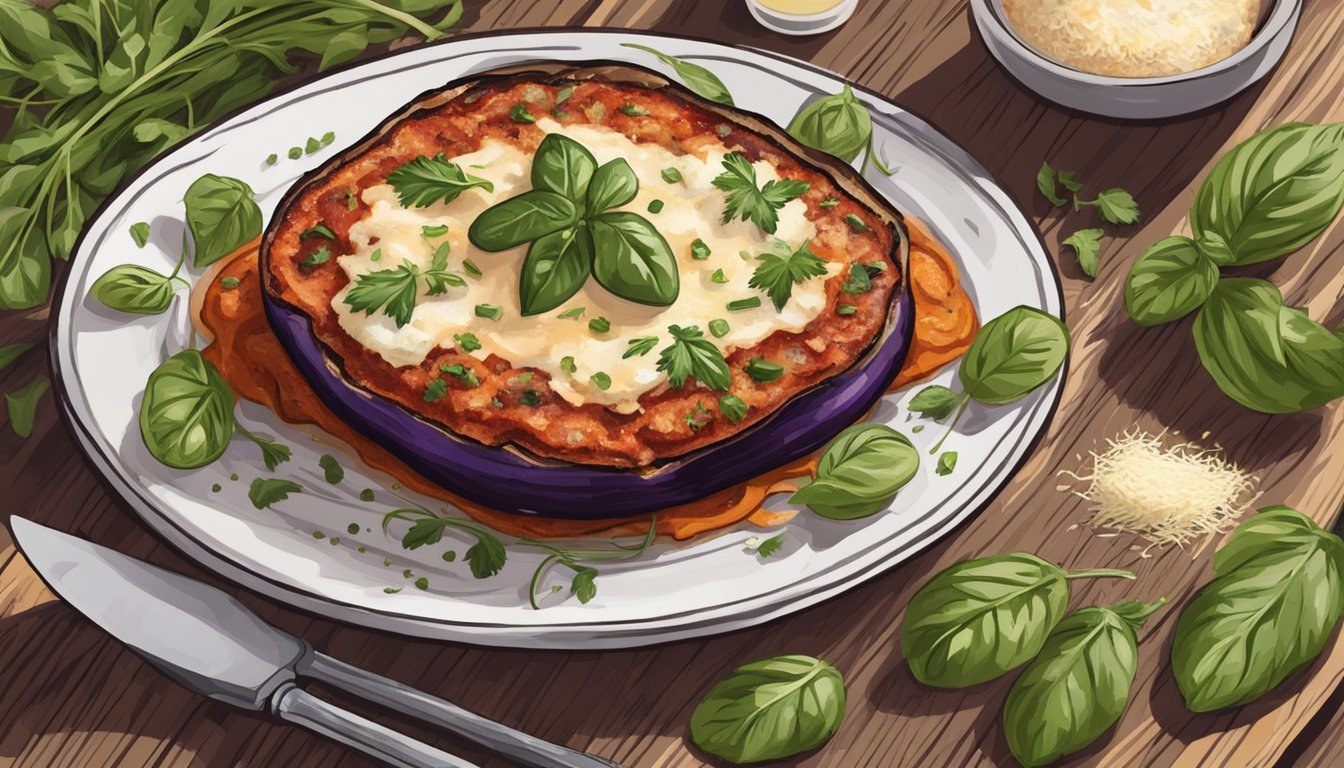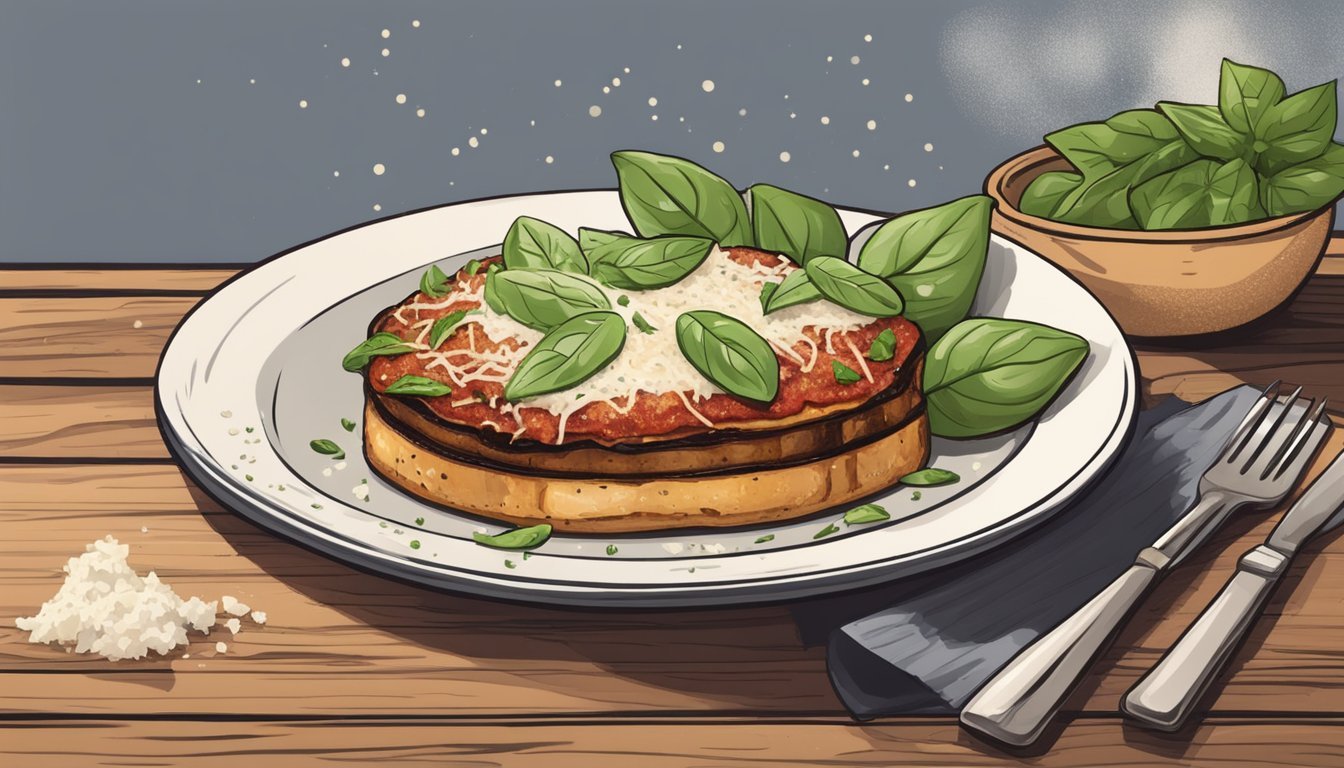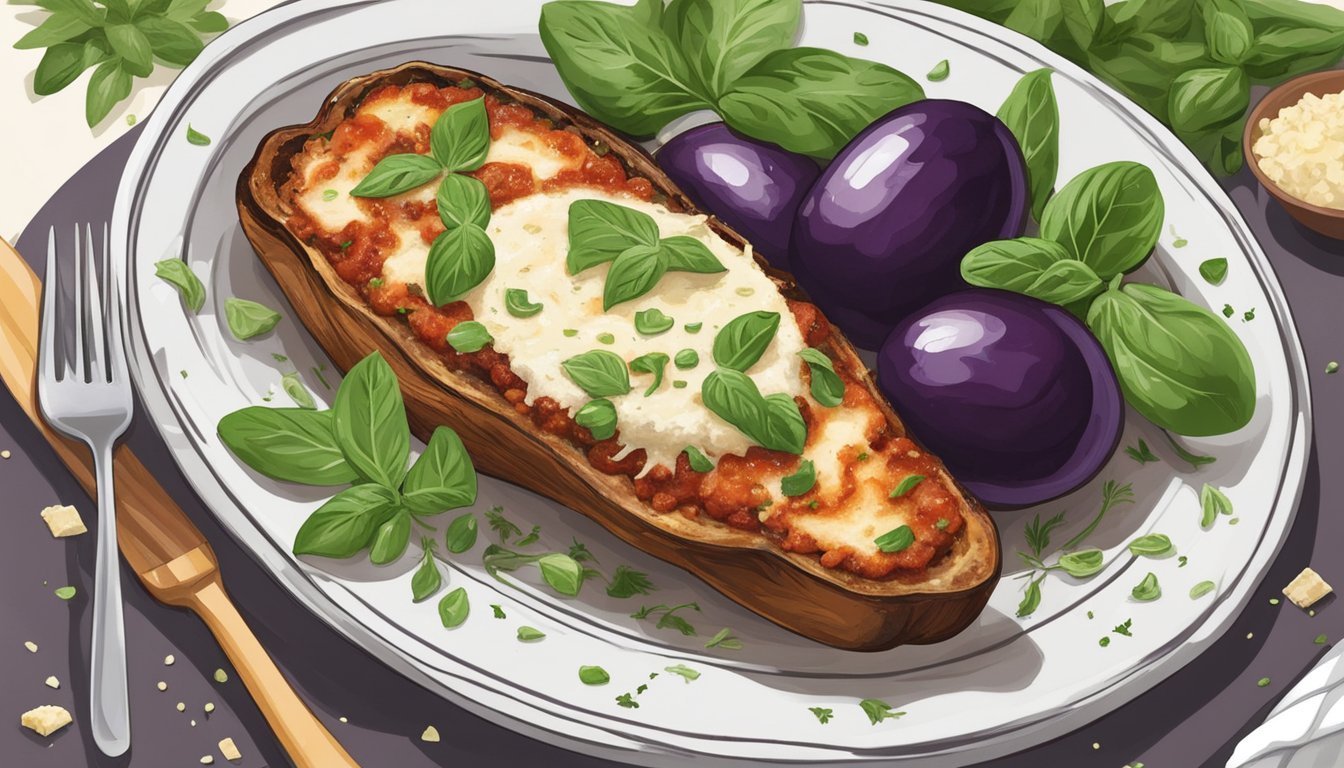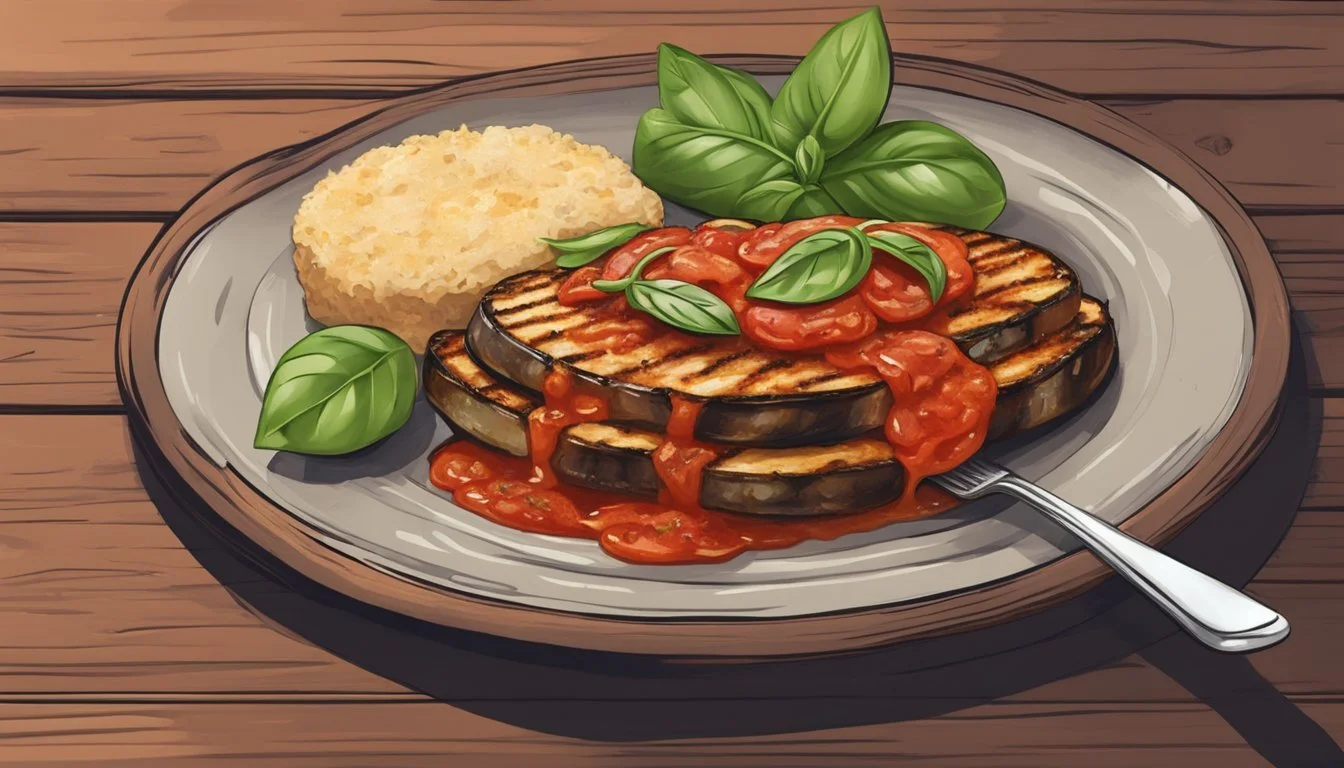How Long Does Gluten-Free Grilled Eggplant Parmesan Last?
Storage Tips and Shelf Life
Eggplant Parmesan is a beloved classic, but for those adhering to a gluten-free diet, it’s essential to know how long this delicious dish lasts when grilled. Not only is gluten-free grilled eggplant Parmesan a fantastic option for a healthy and flavorful meal, but it also offers great versatility for meal prep and leftovers. When stored properly in the refrigerator, gluten-free grilled eggplant Parmesan can last up to 3-4 days, maintaining both its taste and nutritional value.
Knowing the shelf life of gluten-free grilled eggplant Parmesan allows for better planning and ensures that your meals remain safe and satisfying. The freshness and quality of the eggplant, as well as the ingredients used, play crucial roles in determining how long the dish stays appetizing. Proper storage in an airtight container is key to preserving its flavor and texture.
Additionally, freezing is an option for those who want to extend the lifespan of their gluten-free grilled eggplant Parmesan. When frozen, it can last for about 2-3 months without losing its quality. This makes it easy to enjoy a homemade, wholesome meal even on the busiest days.
Understanding Gluten-Free Diets
Gluten-free diets are essential for those with celiac disease or gluten sensitivities. They involve specific ingredient choices and present unique benefits and challenges in cooking.
Benefits and Challenges of Gluten-Free Cooking
Benefits:
Gluten-free cooking can significantly improve the quality of life for individuals with celiac disease or gluten intolerance. It can alleviate symptoms like bloating, fatigue, and gastrointestinal distress. Moreover, removing gluten can encourage a diet that includes more whole, nutrient-dense foods like vegetables, fruits, and lean proteins.
Challenges:
Despite its benefits, gluten-free cooking has its hurdles. Finding suitable replacements for gluten-containing ingredients without compromising taste or texture can be demanding. Many gluten-free products are also more expensive and less readily available, which can complicate meal preparation and planning.
Key Ingredients in Gluten-Free Recipes
Flours and Starches:
Common gluten-free flours include almond flour, rice flour, and coconut flour. These are often combined with starches such as tapioca, potato, or cornstarch to mimic the texture of gluten-containing flours.
Binders and Thickeners:
Ingredients like xanthan gum and guar gum are crucial in gluten-free baking. They help maintain the structure and consistency of baked goods, making them less prone to crumbling.
Seasonings and Add-Ins:
It’s important to ensure that added seasonings, sauces, and processed foods are certified gluten-free. Hidden gluten can be present in many processed flavorings and additives, so reading labels is critical.
Essentials of Eggplant Parmesan
Eggplant Parmesan is a classic Italian dish that combines layers of fried eggplant with rich Parmesan cheese, resulting in a flavorful and comforting meal. Understanding the key components of this dish will enhance the appreciation and execution of its preparation.
Characteristics of Eggplant
Eggplant is a versatile vegetable often used in Italian cuisine. It has a spongy texture that absorbs flavors well, making it ideal for dishes like Eggplant Parmesan.
Eggplants should be firm and glossy, and selecting medium-sized ones can reduce bitterness and seeds. Whether you choose to peel the eggplant or leave the skin on is a matter of preference, although the skin can add more texture and nutrition.
When grilled or fried, eggplant slices should be about 1/4 to 1/2 inch thick. This allows them to cook evenly without becoming too mushy.
Role of Parmesan Cheese
Parmesan cheese is crucial in Eggplant Parmesan, providing a sharp, tangy flavor that complements the mild taste of the eggplant. It is often combined with other cheeses such as Mozzarella or Gruyere for added richness.
The cheese is typically grated and mixed with breadcrumbs to form a crispy, golden crust when baked. Some versions of the recipe use vegan Parmesan cheese alternatives to cater to dietary restrictions without losing the characteristic taste.
In addition to its taste, Parmesan helps bind the layers of eggplant and sauce, creating a cohesive dish that melts in the mouth.
Overview of Traditional Eggplant Parmesan
Traditional Eggplant Parmesan involves layering fried or grilled eggplant slices with marinara sauce and cheese before baking.
To prepare, eggplants are typically sliced, salted to remove excess moisture, and then either grilled, baked, or fried until golden brown. Each slice is dipped in a mixture of egg and breadcrumbs, sometimes seasoned with herbs like oregano.
The dish is assembled in a baking dish, starting with a layer of marinara sauce, followed by eggplant, more sauce, and cheese. This process is repeated until the dish is filled, then it is baked until the cheese is bubbly and browned.
This classic method creates a hearty, satisfying meal that celebrates the ingredients and their robust flavors.
Preparation of Gluten-Free Grilled Eggplant Parmesan
The process of making Gluten-Free Grilled Eggplant Parmesan involves selecting the right ingredients, choosing appropriate gluten-free breading alternatives, and mastering grilling techniques.
Selecting Fresh Ingredients
For this recipe, choosing fresh ingredients is crucial. Begin with medium-sized eggplants that feel firm to the touch. Look for smooth and shiny skin without any soft spots or blemishes.
Additionally, opt for fresh herbs like oregano and basil to enhance the flavor. High-quality marinara sauce and your preferred type of cheese, whether vegan or dairy, will complete the ingredient list. Set aside enough time for both prep time and cook time to ensure the ingredients meld well together.
Gluten-Free Alternatives for Breading
Creating a gluten-free breading mix involves multiple components. Combine gluten-free breadcrumbs, almond flour, and cornstarch to achieve the right texture.
These elements simulate the traditional breading texture while keeping the dish gluten-free. Ensure you also have beaten eggs or a vegan egg substitute ready for coating the eggplant slices. This mix is essential for achieving the crispy texture typically expected in eggplant parmesan.
Grilling Techniques for Eggplant Slices
Grilling the eggplant slices requires attention to detail. Preheat your grill to medium-high heat. Lightly brush the grill grates with oil to prevent sticking.
Place the eggplant slices in a single layer on the grill. Grill each side for about 4-5 minutes until they are tender and have grill marks. Monitor closely to avoid charring. Once the eggplant slices are grilled, they are ready for layering with sauce and cheese before baking.
Cooking Process
Cooking an excellent gluten-free grilled eggplant parmesan relies on correct layering and achieving the right texture and tenderness. The following sections outline these key aspects.
Layering and Baking
To begin, preheat the oven to 425°F (220°C). Slice the eggplants into 1/2 inch thick pieces and brush them with olive oil. Place the slices on a baking sheet lined with parchment paper and bake for 20 minutes, flipping halfway through.
Once the eggplants are sufficiently grilled, spread a thin layer of marinara sauce on the bottom of a baking dish. Lay the grilled eggplants on top, then cover each slice with a mix of tomato sauce and shredded mozzarella. Repeat these layers until all ingredients are used, ensuring the topmost layer consists of cheese.
Bake the assembled casserole in the preheated oven for 25-30 minutes until the cheese is bubbly and slightly browned.
Ensuring Proper Texture and Tenderness
Achieving the desired texture and tenderness in a gluten-free eggplant parmesan is pivotal. The eggplant slices need to be grilled properly; soft inside while firm on the outside. Pre-baking the slices reduces excess moisture and avoids a soggy dish.
Utilizing a combination of gluten-free flour and breadcrumbs creates a crispy outer layer. Dipping the eggplant in a beaten egg mixture before coating with the flour mix ensures the coating adheres well and bakes evenly.
Baking the dish at a high temperature helps meld the flavors and achieve the right consistency in the final product. Keep an eye on the cheese, ensuring it melts thoroughly without burning, maintaining the right texture throughout.
Nutritional Profile
Grilled eggplant parmesan provides a variety of nutrients, including a balanced distribution of macronutrients and essential vitamins and minerals. It is generally low in calories and can be customized for various dietary needs.
Caloric and Macronutrient Breakdown
A typical serving of grilled eggplant parmesan (about 1 cup) contains approximately:
Calories: 150-250
Protein: 5-10 grams
Carbohydrates: 10-20 grams
Fiber: 3-5 grams
Sugar: 4-7 grams
Fat: 8-12 grams
Saturated Fat: 1-3 grams
Eggplant is low in calories and high in fiber, which can aid in digestion and help maintain a healthy weight. When combined with olive oil and parmesan cheese, the dish gains beneficial fats and protein. Additionally, common ingredients like marinara sauce contribute to the overall carbohydrate and fiber content.
Allergen Information and Health Considerations
Grilled eggplant parmesan can be modified to meet gluten-free requirements by using gluten-free breadcrumbs during the preparation process. This dish is naturally free of common allergens such as nuts and shellfish, but it does contain dairy due to the parmesan cheese.
Key health considerations include:
Sodium: A serving may contain 300-500 mg. Opting for low-sodium marinara can help reduce this amount.
Cholesterol: The presence of cheese can add 10-20 mg of cholesterol per serving.
Vitamins and Minerals:
Vitamin A: Essential for vision and immune function.
Vitamin C: Supports skin health and immune function.
Iron: Important for oxygen transport in the blood.
Calcium: Crucial for bone health.
Potassium: Helps regulate fluid balance and muscle contractions.
Being aware of these nutritional and allergen aspects ensures that grilled eggplant parmesan can be a healthy, enjoyable part of a gluten-free diet.
Storing and Preservation
Proper storage and preservation of gluten-free grilled eggplant parmesan ensure that the delicious cheesy, crispy texture and rich marinara sauce flavors are maintained for as long as possible.
Best Practices for Storing Leftovers
To store leftovers, it’s essential to let the grilled eggplant parmesan cool to room temperature. This prevents condensation and sogginess. Transfer the cooled portions to an airtight container to maintain freshness. Typically, the dish includes mozzarella cheese and marinara sauce, factors that can affect its shelf life.
Place the container in the refrigerator, where leftovers can safely last for 3-4 days. Always label your container with the date to monitor freshness. When ready to reheat, ensure it reaches an internal temperature of 165°F (74°C) for safe consumption.
Freezing and Reheating Instructions
Freezing gluten-free grilled eggplant parmesan is an excellent way to extend its shelf life. After the dish cools, cut it into portions and wrap each piece tightly in plastic wrap. Follow by placing the wrapped pieces in a freezer-safe bag or container.
For reheating, remove the desired portion from the freezer. Allow it to thaw in the refrigerator overnight. Preheat the oven to 375°F (190°C). Place the eggplant parmesan on a baking sheet and cover with foil to prevent drying out. Heat for 20-30 minutes, removing the foil in the last 10 minutes to regain its crispy texture.
Additional Tips and Variations
Adding the right garnishes and pairing your gluten-free grilled eggplant Parmesan with complementary dishes can elevate your meal. Here are some specific recommendations to enhance both the presentation and taste.
Serving Suggestions and Garnishes
Enhance the visual appeal by using fresh herbs like basil and oregano. These not only add color but also enhance the flavors.
Garlic can be used to add a depth of flavor, either by incorporating minced garlic into the tomato sauce or by sprinkling garlic powder over the top. Consider drizzling a high-quality olive oil on the finished dish for added richness.
Cheese options can be modified. Use a mixture of cheeses like Gruyere or Asiago for a unique flavor profile. For a vegan version, dairy-free cheese can replace traditional cheese.
Incorporate garnishes such as fresh basil leaves, a light sprinkle of Parmesan, and thinly sliced cherry tomatoes. These not only look appealing but also provide contrasting textures and flavors.
Pairing with Other Dishes
Gluten-free grilled eggplant Parmesan pairs beautifully with various side dishes. Consider serving it with a side of gluten-free pasta tossed in marinara sauce, which complements the flavors of the eggplant and cheese.
A mixed green salad with a light vinaigrette provides a refreshing counterpoint. Include ingredients like cherry tomatoes and cucumbers for added crunch.
For those seeking a heartier option, roasted vegetables such as zucchini, bell peppers, and onions bring a robust flavor and additional nutrients to the meal.
Substitute traditional breadcrumbs with gluten-free alternatives like crushed Rice Chex cereal or almond flour for different textures in the breading of the eggplant. These make it possible to customize the dish for specific dietary needs without sacrificing taste.
Lastly, a slice of garlic bread made with gluten-free bread can absorb any extra sauce and offer a satisfying, crunchy component.








